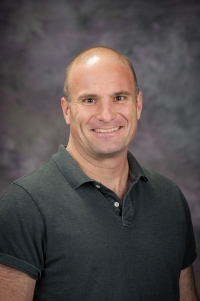
102 Cardwell Hall
Biomolecular condensates are structures formed by the spontaneous condensation of biomolecules. These structures are emerging as a common motif in cellular organization and function. Biomolecular condensates have many common properties such as liquid properties and essential building blocks with polymer-like characteristics. Due to their liquid properties, it is commonly thought that their utility arises from their role as a compartmentalization mechanism. We have studied two binary mixtures that form liquid condensates, SPOP/DAXX and poly-SUMO/poly-SIM.
Using analytic theory to model condensate densities and molecular partitioning, we find that the condensate properties can be explained if the networks stabilizing the condensed phases have dramatically different structures. Furthermore, these structures impart critical functional properties to the resulting network. In the case of SPOP/DAXX condensates the structure allows the network to switch between a fluid state and a gel with arrested dynamics. In contrast, the SUMO/SIM structure provides a sensitive mechanism to recruit client molecules and even specifically select between closely related clients. These findings suggest a general model that functional structure can be embedded within a liquid when the molecules assemble hierarchically via interactions that vary widely in affinity. Stronger interactions provide structural specificity needed for functionality, while weaker interactions allow the molecules to condense without the risk of kinetic arrest.
